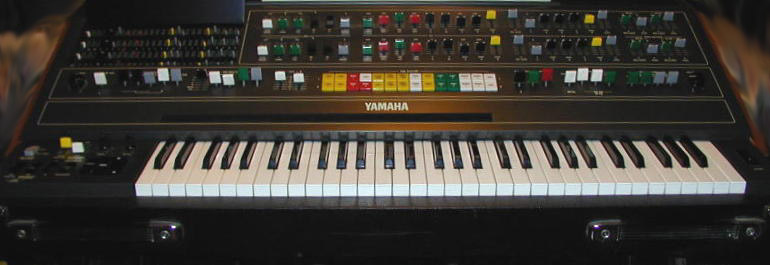Old Crow's Synth Shop: CS-80 -- A Cautionary
Tuning Tale

Yamaha printed an
adjustment procedure manual for the CS-80 that outlines how to
calibrate all of the trimmers in the machine. While this is all well and
good, they describe something in the oscillator tuning procedure you
should not do.
From
page 6:
"Touch master boards (#1 ~ #7) lightly on the foil side of the boards in
the area of the blue pot (VR3) at the upper front side of the circuit
board (see Fig. 4)."
DO NOT DO THIS!! You will kill the CMOS chips on the SH board if
any electrostatic charge leaves your fingers and conducts from the M board
through the wires to the SH board. All M boards are connected to the SH
board both for pitch control and triggering. I used an ESD wrist-strap
while doing this and still managed to kill the SH board on my CS-80.
Easy enough to repair, but annoying all the same.
The safest way to determine which pair of M boards is sounding is to
turn the power off for 5 seconds then back on. The first key played will
always sound voice #1. 2nd key is voice 2, etc. For voice #8, press a
key 4 times, holding the key down the 4th time. then hold down the desired
key to sound for #8 and release the first key. Voice #8 is now
sounding.
Other calibration caveats:
After opening the hood of the CS-80 and raising the rack of
circuit boards to the 'tuning' position, turn on the power and leave the
instrument to warm up for 30 minutes.
Buy and use an anti-static wrist strap from Radio Shack or other
electronics store. The wrist strap connects the wearer to the earth
ground of the instrument to prevent static electricity from accumulating
on your clothes and body. The easiest place to connect the clip-end of
the strap is to the keyboard frame. The wrist strap has an internal
resistive element that prevents you from getting zapped through the strap
wiring if you touch the wrong thing while wearing it. The strap DOES NOT
PROTECT you against shock hazards like touching the live AC main
terminals, so be careful all the same.
Proper DC voltages from the power supply are crucial to correct
operation of the instrument. Following the Adjustment
Procedure steps for power supply calibration, make sure the +15V,
+10.6V, +8.5V, -6.5V and -15V are as closely adjusted as possible to their
ideal values. The voice cards can actually stop working if things are off
by 1 volt or more.
When adjusting the trimmers on the M boards, use a 'trimmer
adjustment stick', which is available at most electronics shops. DO NOT
USE anything with a metal shaft. I frequently use an Xcelite R3322
screwdriver (my all-time favorite tool) to adjust trimmers, but not in
this case. The caution here is that the metal shaft of a screwdriver
could short against things on the closely-spaced rack of 35 circuit
boards. Also, the metal shaft/plastic handle combination presents a
possible static electricity problem. You may be grounded via the wrist
strap, but the tip of the tool is not. Unless you are dutifully aware you
must touch the tool tip to ground (such as the keyboard frame) each
time you get ready to adjust something, it is best to use the trimmer
adjustment stick, which is non-conductive and longer anyway.
If you must remove a card from the rack: turn off the power,
bend any cabling up out of the way, unscrew the two mounting screws and
maneuver the board out until it can be turned sideways. IMPORTANT
CAUTION: the mounting 'ears' are live with DC power supply voltage
when the power is on! Do not let them touch the steel keyboard
assembly. Place a suffuiciently large piece of cardboard or other insulator
underneath the extracted board before working on it.
Scott
Rider -- oldcrow@oldcrows.net

